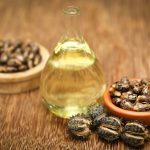♦ The European Food Safety Authority (EFSA) has now classed Buglossoides oil as a safe novel food ingredient following initial concerns over its safety by other member states.
EFSA recently approved the use of Buglossoides oil which comes from the plant, Buglossoides arvensis otherwise known as Lithospermum arvensis, Ahiflower, or Corn Gromwell in the USA. The application for novel food use in Europe had been submitted by Technology Crops International after receiving approval from the UK’s Food Standards Agency (FSA).
The plant is seen as a future star for cultivation in the temperate zones of Europe for example rivalling Echium plantageneum and Ribes for its seed oils. The main interest is the potential to provide a novel and sustainable source of various fatty acids such as stearidonic acid (SDA, C18:4n-3). SDA is the key precursor for the manufacture and biosynthesis of other important dietary oils such as the omega-3 (or n-3) polyunsaturated fatty acids (PUFAs)which include eicosapentaenoic acid (EPA, C20:5n-3) and docosahexaenoic acid (DHA, (22:6 n-3) that we find in fish oils.
The main commercial sources of n-3 long chain PUFAs are the seed oils extracted from flaxseed which is a source of ALA (alpha linoleic acid), and SDA from both blackcurrant and the plant, Echium plantagineum. Both latter sources are extremely low yielding and variable in quality with blackcurrant seed oil generally only offering about 3% of its content as stearidonic acid. Buglossoides arvensis has major yield and agronomic benefits over the cultivation of E. plantagineum.
The sustainability aspect comes from seeking alternative sources to dwindling fish stocks and providing a more readily acceptable source to a food like oily fish which is not so readily consumed or even available.
The oils can be used directly as supplements or incorporated into a wide variety of products – cereals, dairy, weight control and medical foods. It provides an alternative source of long-chain omega-3 fatty acids for vegetarians.


I truly believe this could be a highly valuable oil and an alternative crop for many farmers. I’ve looked at a number of applications for weight control foods using this oil and it might me a very good alternative to flax for omega-three fatty acids.